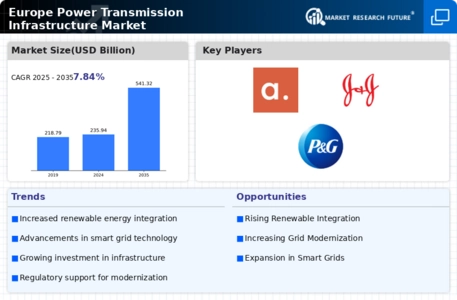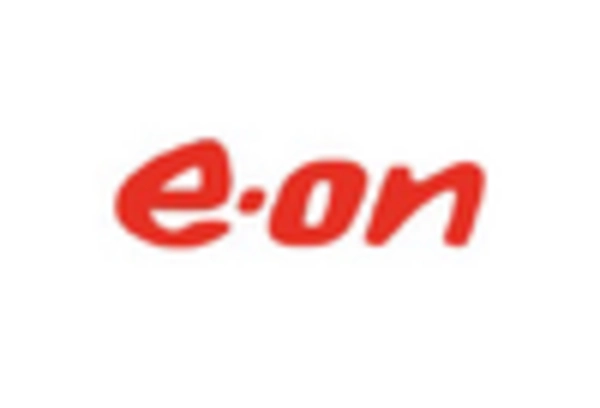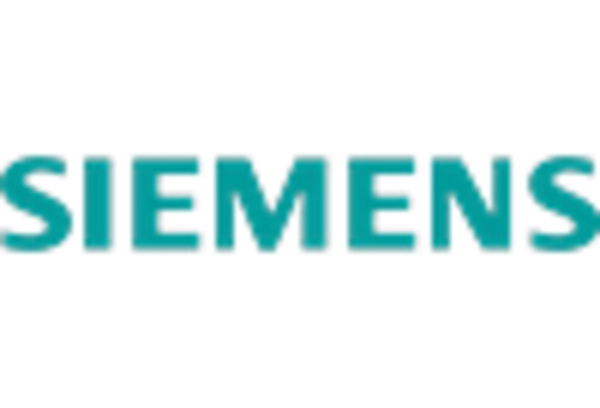Market Analysis
In-depth Analysis of Europe power transmission infrastructure Market Industry Landscape
The Europe Power Transmission Infrastructure Market is a dynamic landscape shaped by various factors influencing supply, demand, and investment patterns. At its core, the market revolves around the transmission of electricity from power generation sources to end-users across Europe's diverse regions. One of the primary drivers of market dynamics is the continent's transition towards renewable energy sources, such as wind and solar power. This shift is prompting significant investments in updating and expanding the transmission infrastructure to accommodate the decentralized nature of renewable energy generation.
Moreover, government policies and regulations play a crucial role in shaping the market dynamics of Europe's power transmission infrastructure. The European Union's ambitious targets for carbon reduction and renewable energy adoption drive regulatory frameworks that prioritize grid modernization and interconnection projects. These policies aim to enhance energy security, promote cross-border electricity trade, and facilitate the integration of renewable energy resources into the grid.
Technological advancements also contribute to the market dynamics by enabling the development of more efficient and resilient transmission systems. Innovations in high-voltage transmission technologies, smart grid solutions, and grid automation enhance the reliability and flexibility of power transmission infrastructure. Additionally, advancements in energy storage technologies complement transmission infrastructure by addressing intermittency issues associated with renewable energy sources, further shaping the market landscape.
Market dynamics are further influenced by economic factors such as investment trends, financing mechanisms, and cost considerations. The growing demand for electricity, coupled with the need to replace aging infrastructure, drives investments in transmission projects. Public-private partnerships, government subsidies, and innovative financing models support the funding of large-scale transmission infrastructure projects across Europe. Cost considerations, including the total cost of ownership, operational expenses, and lifecycle costs, influence decision-making processes regarding infrastructure development and upgrades.
Furthermore, geopolitical factors and energy geopolitics play a significant role in shaping the market dynamics of Europe's power transmission infrastructure. Geopolitical tensions, energy security concerns, and geopolitical alliances impact cross-border energy flows, infrastructure development priorities, and investment decisions. The diversification of energy sources and supply routes, as well as the promotion of energy independence, are key considerations in shaping the geopolitical dynamics of the region's energy landscape.
Environmental and social factors also influence market dynamics, as stakeholders increasingly prioritize sustainability, environmental stewardship, and community engagement in infrastructure development projects. Environmental impact assessments, stakeholder consultations, and community engagement initiatives are integral parts of the planning and implementation processes for transmission infrastructure projects. Adherence to environmental regulations, mitigation of ecological impacts, and the promotion of social acceptance contribute to the overall sustainability and success of transmission infrastructure investments.
The market dynamics of Europe's power transmission infrastructure are shaped by a complex interplay of factors, including technological advancements, regulatory frameworks, economic considerations, geopolitical dynamics, and environmental and social factors. As the continent continues its transition towards a more sustainable and resilient energy system, the evolution of transmission infrastructure will remain a key focus area, driving investments, innovation, and collaboration across the region.

















Leave a Comment